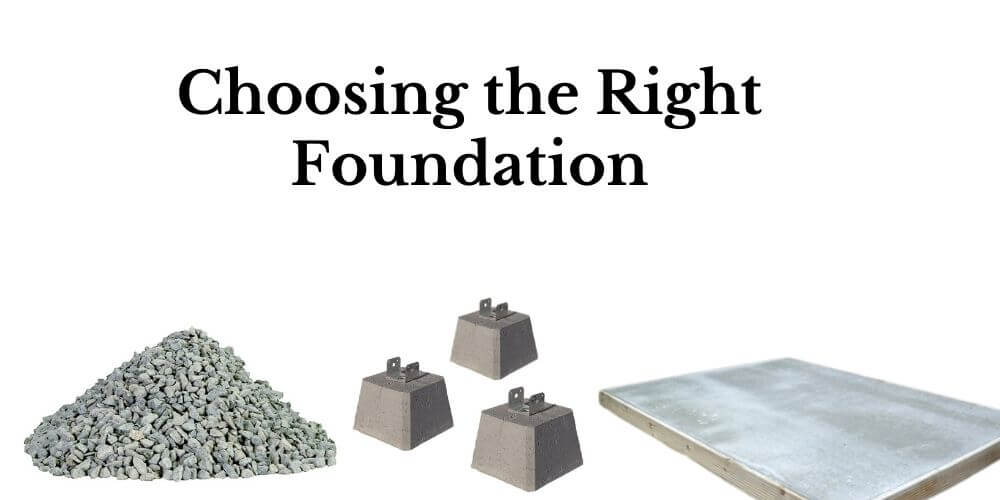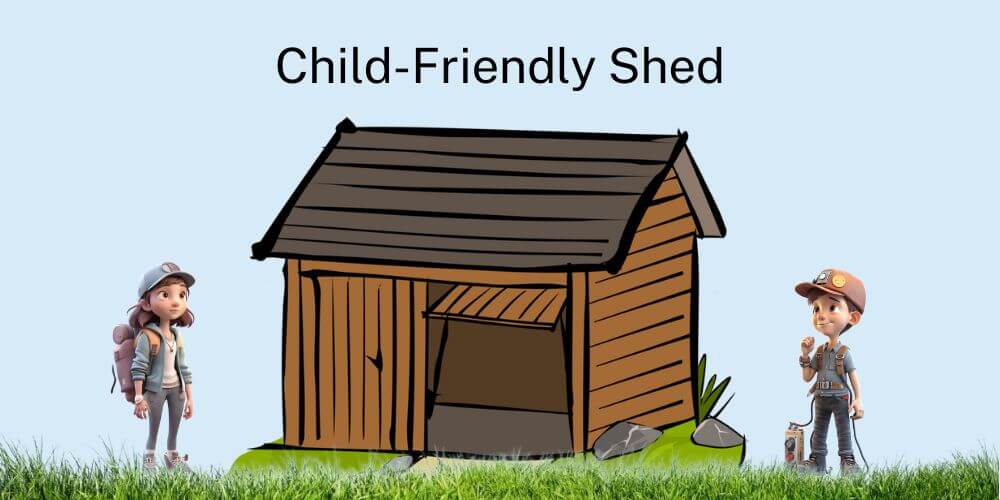What is the right foundation for your shed? When it comes to constructing a shed, choosing the right foundation is crucial for its stability and longevity. A well-built foundation ensures that your shed is protected from ground moisture, prevents shifting or sinking, and provides a level base for the structure.
Selecting the Right Foundation for Your Shed: Steps
Assess the Site
Start by assessing the site where you plan to install your shed. Consider the slope, drainage, and soil type.
A level area is ideal for stability, and proper drainage prevents water accumulation around the shed. If the ground has a significant slope, you may need to level the area or consider other foundation options. Additionally, note the soil type—clay soil retains water, while sandy soil drains quickly. Understanding these factors will help you choose the most suitable foundation type.
Gravel Foundation
A gravel foundation is a popular and cost-effective choice for shed installations. Begin by marking and leveling the area. Remove any vegetation, rocks, or debris. Next, lay down a geotextile fabric to prevent weed growth. Then, add a layer of gravel, approximately 4-6 inches deep, and compact it thoroughly.
This foundation provides excellent drainage and stability for sheds. It is particularly suitable for sheds with lightweight structures or in areas with good soil drainage.
Concrete Slab Foundation
A concrete slab foundation offers the highest level of durability and longevity. However, it requires more planning and preparation. Begin by marking and leveling the area. Excavate the soil to a suitable depth, typically around 4-6 inches, depending on your local building codes. Install formwork to create the frame for the concrete slab. Add a layer of compacted gravel for improved drainage. Finally, pour and finish the concrete, ensuring it is level and smooth.
This foundation is ideal for larger sheds or heavy-duty storage needs.
Concrete Footers
For sheds with significant weight or in areas with unstable soil conditions, concrete footers provide enhanced support. Dig holes at predetermined intervals and depths, typically below the frost line in your region. Install rebar for reinforcement and pour concrete into the holes, allowing it to cure and harden. Once the footers are set, construct a wooden or concrete beam frame atop the footers.
This foundation offers exceptional stability and is suitable for large sheds or areas with loose or shifting soil.
Deck Blocks or Piers
Deck blocks or piers are an alternative foundation option, providing stability and elevation for sheds. These precast concrete blocks or cylindrical piers are placed at strategic locations, with each block supporting a beam or joist. Level the ground, place the blocks or piers at the appropriate intervals, and ensure they are aligned and level. Then, construct the beams or joists on top of the blocks or piers.
This foundation is ideal for smaller sheds or areas with limited accessibility to heavy machinery or concrete.
Final Thoughts
Selecting the right foundation for your shed is a critical decision that directly impacts its stability and durability. By assessing your site, considering factors such as slope, drainage, and soil type, and exploring options like gravel, concrete slab, concrete footers, or deck blocks, you can make an informed choice. Remember, a solid foundation is the key to a successful and long-lasting shed structure.
Click here to read about what is the best base for a shed.



